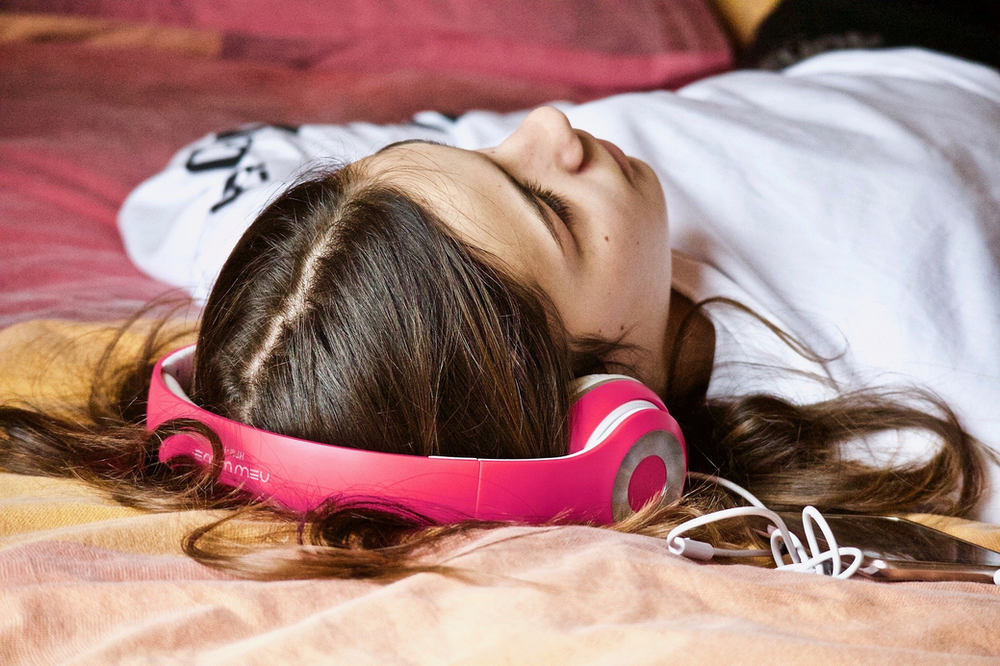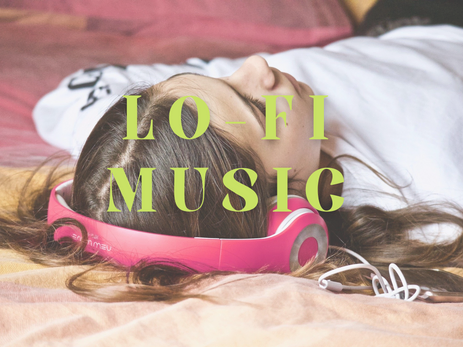Uncategorized
Lo-Fi Music
What is Lo-Fi Music?
By definition, Lo-Fi stands for low fidelity which is a type of recording that contains ‘technical flaws’ so that it sounds different compared to the live sound.
Effects used such as distortion, humming, background noise, or limited frequency response are said to trigger the cerebrum and can help a person focus.

How Does This Happen?
Well, The frontal lobe of the brain is the centre of most brain function, it is how we develop as humans.
The brain notices the differences in sound and this helps it get into a state of calming mindset and focus. In fact, one survey discovered that 86% of the listeners have seen an increase in their productivity and in their study habits.
Where Did Lo-Fi Come From?
Lo-Fi first came about during the 1950s when recordings were not able to be high tech.
This led to Lo-Fi being strongly associated with young artists intentionally using low-quality recordings to attract a younger audience.
It wasn’t until the 1980/the 90s that Lo-Fi started being part of indie rock groups such as American garage, British punk and Norwegian black metal.
But what did they use to attract the Lo-Fi label?
Well, they had abstract lyrics, free-form structures and a hint of experimentalism which made them stand out from the mainstream.
In the late 2000s submerged into the chill pop genre with an infusion of slow tempos and ambient/jazz inflexions turning into something called chillwave.
Lo-Fi SUBGENRES
Lo-Fi Hip-Hop
Lo-Fi House is similar to music you would hear in a club. It tends to take inspiration from 80’s and 90’s house music whilst still maintaining that important characteristic of nostalgia and relaxation that its hip-hop counterpart has.
https://www.youtube.com/watch?v=5qap5aO4i9A
Chillwave
It is characterised by a faded or dreamy retro pop sound, with lyrics mainly revolving around summer alongside psychedelic or Lo-Fi aesthetics, mellow vocals, low-to-moderate tempos and vintage synthesisers. Chillwave can be similar to 1980s electro-pop and engages with notions of memory. In fact, it was one of the first genres to develop primarily through the Internet.
Dream Pop
This type of music began as a subgenre of alternative rock in the 80s with heavy use of dreamy synthesiser sounds and atmospheric sounds.
Shoe Gaze
This subgenre is all about distortion, fuzz and haziness with vocals blending in with the instrumentation causing a mudded sound. It is traced back to Irish Rock Band My Bloody Valentine where their 1988 album Isn’t Anything pioneered the sound.
Down Tempo
This sound is more like ambient music but with a greater focus on beats.
The idea was that if you wanted a break from electronic music from a festival, this would suffice. As well, Dj’s in Ibiza for example would use it to downtempo and calm the audience’s energy.
Trip Hop
This is a sub-genre of Down-Tempo.
It is a blend of electronica and hip hop but has more commonly noted features of jazz, funk and soul.
Vapor Wave
This sub-genre began as a parody of 80s and 90s capitalism consumer culture.
The term itself is a play on words from Vaporware which is where products are announced to the public but not yet for sale. The genre mixed pop songs with jazz, lounge and elevator music which is ironic as shopping centres (which is where you’d find this kind of music) is key for consumerism.
Vapor Wave is also known for its visual aesthetics including graphic designs and word art.
https://www.youtube.com/watch?v=97kZWuVkpsY
What About Contemporary Lo-Fi?
The history of contemporary Lo-fi music starts around the same time as the debut of live stream channels on YouTube back in 2013.
Lo-fi artists found a good place to craft lo-fi playlists and started also doing so on other streaming services. It was so popular that in 2015, one YouTube channel, ChilledCow (later known as Lofi Girl), broadcasted a continuous live stream that, by 2017, had continued for 13,000 hours to 7.5 million subscribers.
Lo-Fi MAIN CHARACTERISTICS
Drum Loops
Similarly to hip-hop, lo-fi uses a large number of drum loops to form a rhythm, these can include both electronically produced samples and live recordings. However, beat-makers prefer live elements because they’re easier to manipulate with a digital audio workshop. Beats are typically low in tempo; approximately 70- 90 beats per minute (BPM).
Jazz Chords
Jazz chord progressions are an important element in the majority of Lo-Fi songs for their relaxed, thoughtful quality. Samples of rhythm, bass and drums, and piano are prevalent in the genre. Some Lo-Fi artists sometimes incorporate horns and guitar as well.
Samples
Despite lo-fi being typically instrumental, many Lo-Fi tracks can feature vocal samples with many drawings from anime (the Japanese cartoon genre). The scratching of a vinyl record is also very popular within the genre and is used to enhance the warmth and nostalgia of an analogue recording.
Chords & Melody
Many Lo-Fi tracks start off using samples of chords and melodies from old funk, soul, jazz songs and 80s and 90s Hip-Hop. 4- bar chords are the way to go in this genre and once the production is finished with freezing and flattening the audio, you can now use the chord progression as the audio.
Drumbeat
Dusty and scratchy sounding drums are a key element of the genre. Therefore, using old samples is ideal.
In most Lo-Fi songs, the kick and snare of the drum are close together and usually, the second kick is on the offbeat keeping an entertaining rhythm.
Bass Line
Despite the bassline in Lo-Fi music being minimal and relaxed, it still has the power to hold captivating patterns and tones. Lo-Fi artists usually make the sound more interesting by adding saturation or distortion.
To incorporate your bass line with your chord progression and create a similar rhythm; Your chords should only be used as a starting point for your bass line. You can go beyond this rhythm by moving around the notes or even adding in extra rhythmic alterations.
Effects
Effects are kept with classic aesthetics, as modern effects are not usually used.
Chimes, foley, sweeps, background percussion and pretty much anything else that is mellow sounding can be added in. Voices or samples of vocals from a speech (often from old movies) can also be included in your track to create that certain vibe. Processing vocals with EQ distortion and other effects can create some unique sounds.
The good thing about the obscurity of this genre is that you can be as creative as you want when producing Lo-Fi tracks as the sub-genre itself is also very loosely defined, this could be because it has often been referred to as meaningless, however with changing opinions, popularities and industries it can all change.
How Will Lo-Fi Keep Growing?
As Lo-Fi continues to grow in popularity, they are constantly rewriting the rules of hip-hop and leading the music industry into new territories where new forms of music are likely to come.
As Lo-Fi hip-hop continues to debunk the unwritten rules of the music industry. The industry prefers music where consumers find the actual sound and accessibility of a beat appealing rather than focusing heavily on production. As new standards take over traditional music business rules, new waves of artists and gatekeepers will appear and a more diverse creative space will actively flip the industry and provide new ways to achieve profits.

